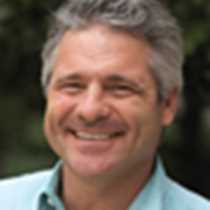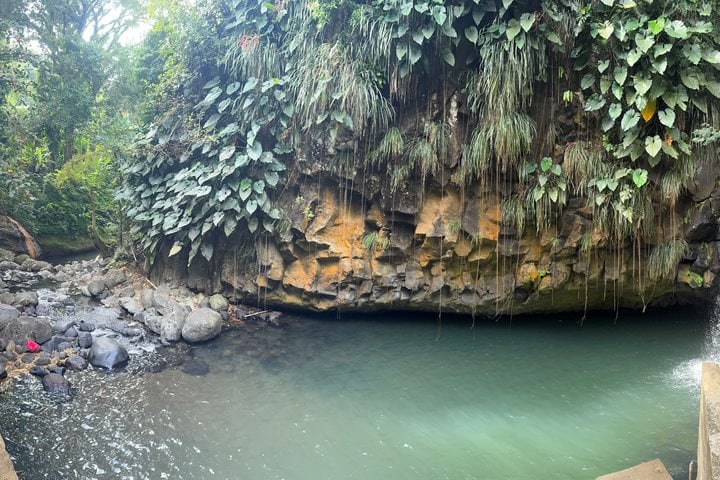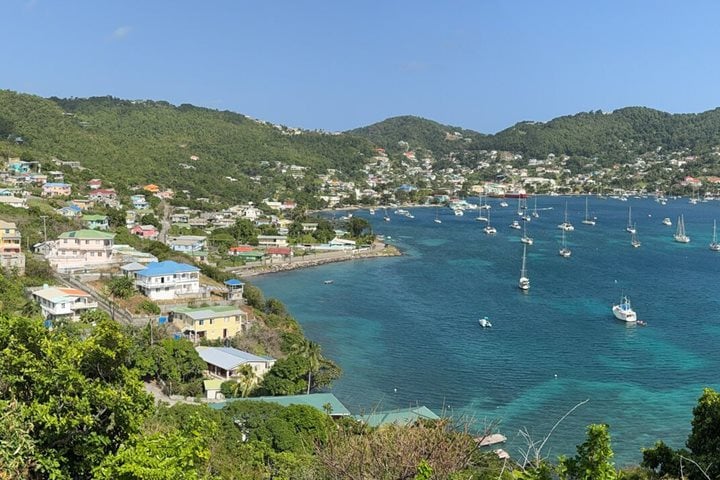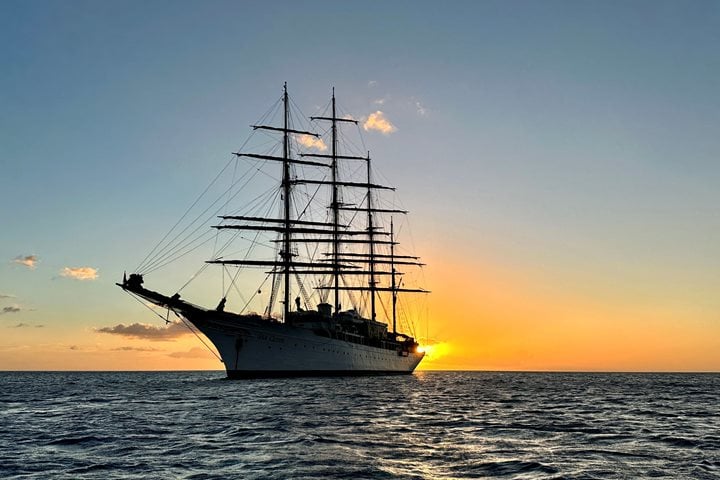Well this certainly was what we came for! Many of us had left our homes under blankets of snow to make our flights to Barbados and board the stunningly beautiful sailing yacht Sea Cloud. We knew that it was one of the very few hand-sailed square-riggers left in the world, and certainly the most elegant, but would we wondered, “Would we really sail?”
Captain Sergey Komakin had put any doubts to rest as soon as we had cleared the harbor of Bridgetown and finished our mandatory safety drill. Sailors scurried aloft and lines ran out on the decks as we set the lower and upper topsails and the inner jib for a beautiful overnight sail to the northwest. The easterly trade winds were true to reputation, maintaining a steady 12 knot breeze overnight that carried us northwest through the night.
And then we woke with the volcanic peaks of St. Lucia to our port, and the French island of Martinique ahead of us in the distance. At 0900 the deck crew went aloft again to set the topgallants, royals, and courses, as the expedition leader gave a “play-by-play” description of the sailing activities and maneuvers on this incredibly coordinated maze of lines and rigging. There was action everywhere, and our photographic instructor advised us to put away our cameras and get familiar with the sailing operations and procedures, find our favorite places on the ship, and learn to anticipate the photographs that we want to get in the richer late-afternoon light. The height of the masts was dizzying, as was the labyrinth of lines and overwhelming abundance of beautiful composition and detail. Wow, this ship really is something special.
Most people associate the Caribbean with sun, sand, and surf, but our historian Tom Heffernan introduced us to the fascinating and colorful history and culture ahead of us, all based on the “white gold” of the 17th and 18th centuries: sugar. The frenzied European demands for the labor intensive sugar drove the triangular slave trade from Africa, bringing millions of Africans to the region to cut and press the rugged sugar cane, which was hauled back to Europe by square riggers. The French, English, Spanish, and Dutch traded cannon-fire from forts and frigates, with the islands of the Lesser Antilles swapped as pawns in the global tussles of the colonial superpowers. During Tom’s talk, we sailed by a 600-foot high volcanic plug called Diamond Rock, which had been officially commissioned as an English frigate, mounted with 18-pound cannons that could fire almost two miles, and shut off trade to the French island of Martinique for 17 months!
We were all out on deck for the clewing up of sails in the late afternoon, and the light on the crew our on the yardarms as they furled in the billowing sails was magical. We even finished with a rare Caribbean “green flash” as the sun’s last rays dipped under the western horizon. First day, and so far it’s like a dream.









